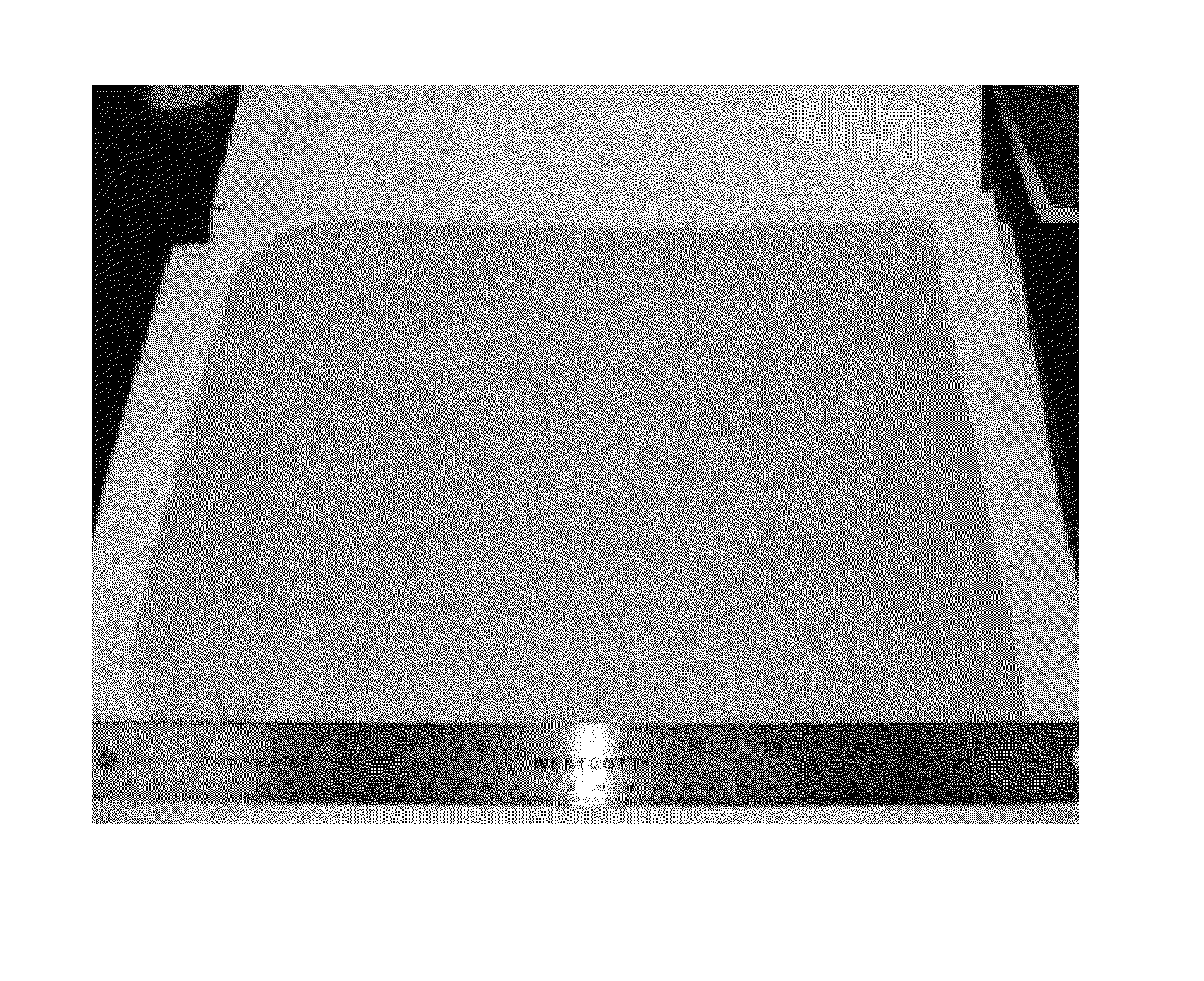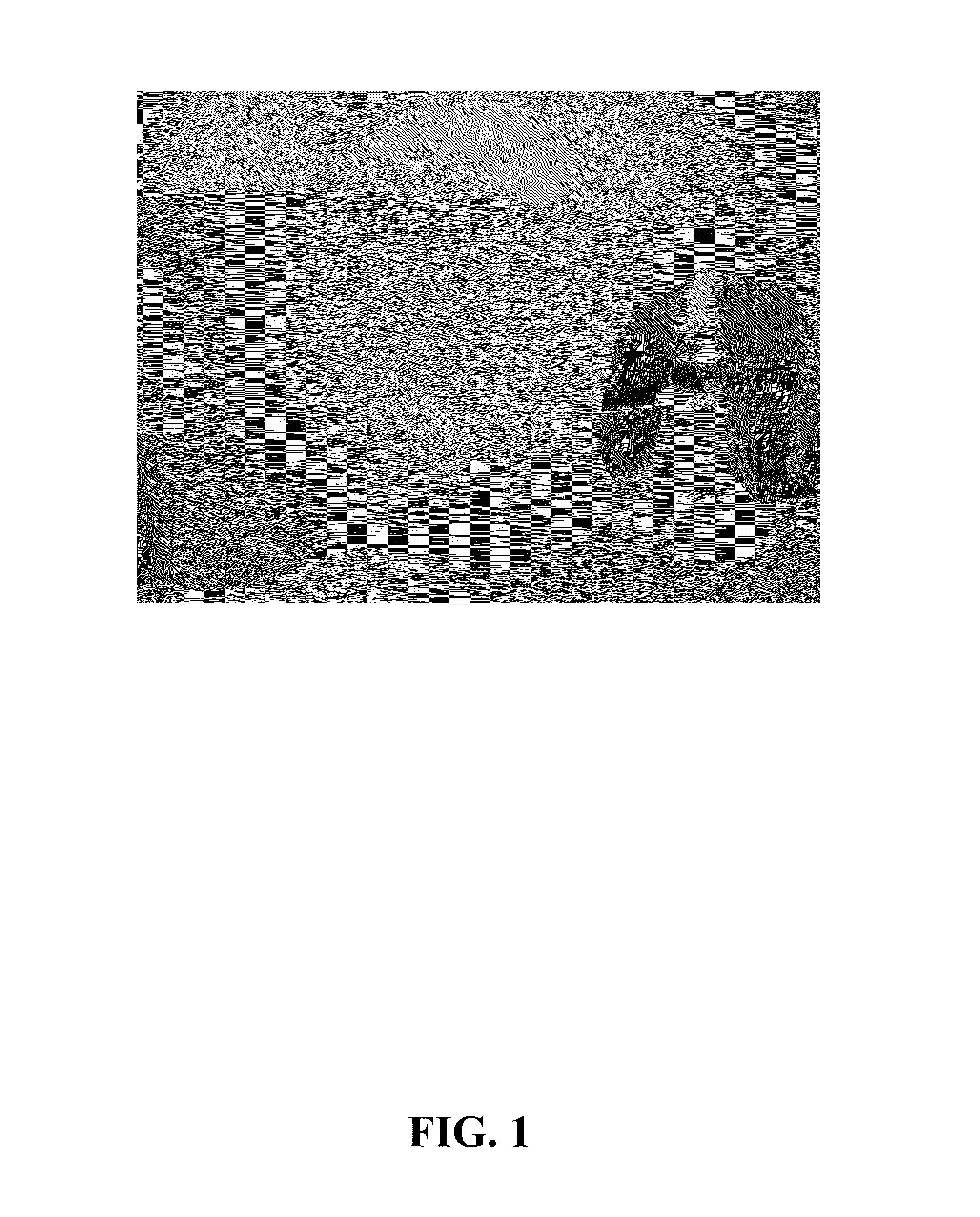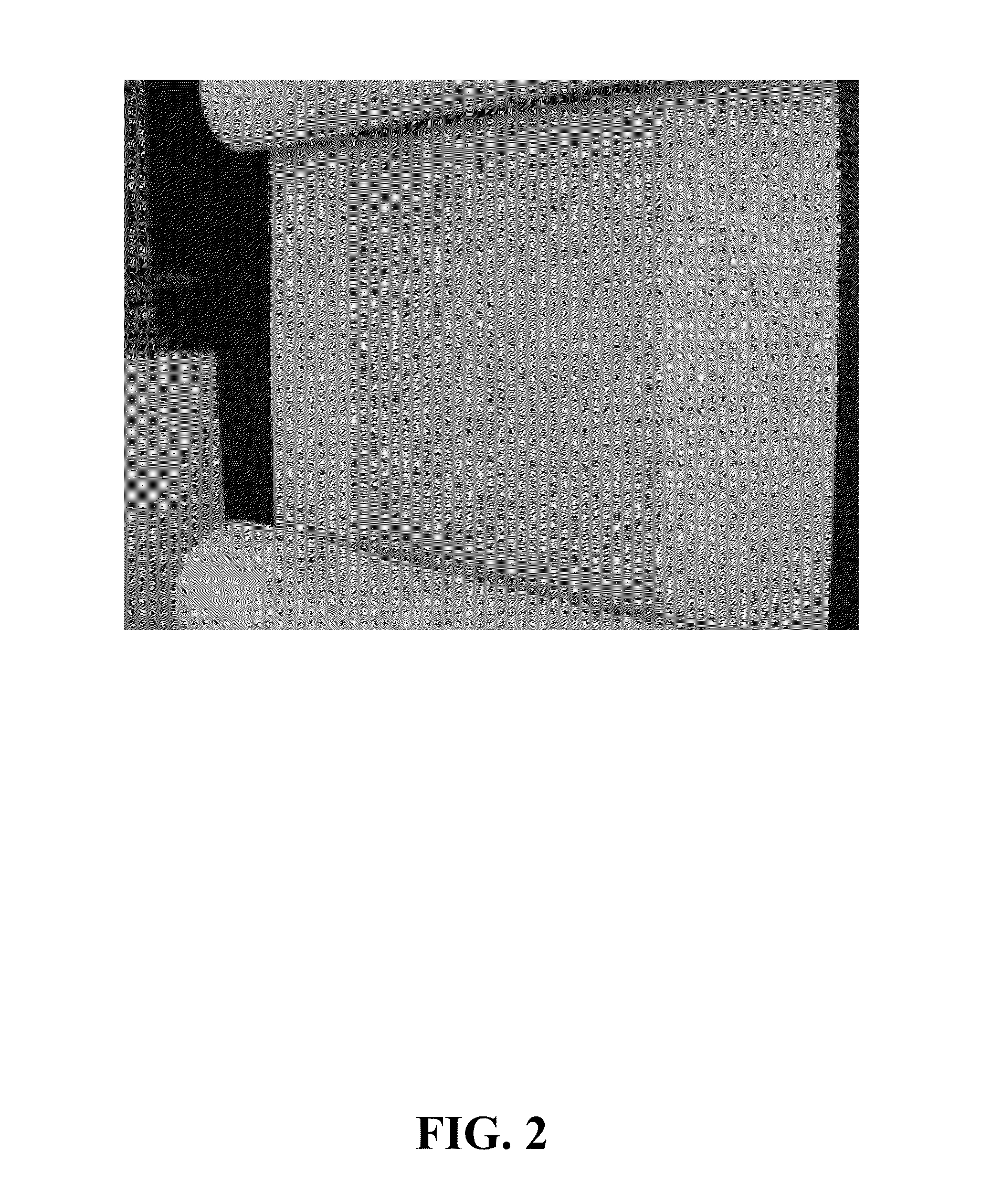Method for making sulfonated block copolymers, method for making membranes from such block copolymers and membrane structures
a technology of sulfonated block and copolymer, which is applied in the field of improving the method of making sulfonated block copolymer and the method of making membranes from such block copolymer, can solve the problems of polymer precipitation and/or intrusion, physical gelation or polymer precipitation still poses a serious problem for polymer sulfonation, and the use of halogenated solvent is highly undesirabl
- Summary
- Abstract
- Description
- Claims
- Application Information
AI Technical Summary
Benefits of technology
Problems solved by technology
Method used
Image
Examples
example # 1
Example #1
Preparing A Styrene Block Copolymer Labeled SB-2 of the Structure (ptBS-EB-S)n
A styrene block copolymer labeled SB-2 of the structure (ptBS-EB-S)n, containing 42% styrene (S) and 43% para-tert-butylstyrene (i.e., p-t-butylstyrene or ptBS) by weight, was prepared in this example. In this (ptBS-EB-S)n polymer, S was considered the interior block “B” for calculating the styrene content in the interior block.
The SB-2 polymer is a selectively hydrogenated (A-D-B)nX block copolymer where the A block is a polymer block of p-t-butylstyrene and the B block is a polymer block of unsubstituted styrene. The block labeled D is hydrogenated butadiene (EB) and X is a silicon containing residue of the coupling agent tetramethoxysilane.
In the preparation of SB-2, anionic polymerization of p-t-butylstyrene in cyclohexane was initiated using s-butyllithium (s-BuLi) affording an A block having an estimated molecular weight of about 22,000 g / mol. A portion of this solution was transferred to ...
example # 2
Example #2
Preparation of Sulfonated Polymer Used to Form Membrane of FIG. 1
This example demonstrates the level of isobutyric acid that is generated in a sulfonation of styrene block copolymer SB-2 with isobutyryl sulfate in cyclohexane.
About 222 lb of the SB-2 polymer hydrogenation product of Example 1, which corresponds to about 34.7 lb of polymer solids in cyclohexane, were added to a N2-flushed 500 gallon glass-lined stirred tank reactor equipped with a water jacket. About 473 lb of cyclohexane were then added to this mixture to afford a polymer solution comprising about 5 wt % of the SB-2 polymer. The reactor was purged three times with N2 and then maintained with N2 at about 15-20 psia. Agitation was commenced while heating the solution to about 25-30° C., and then about 21.13 lb (60.58 moles) of isobutyric anhydride were added to the solution, followed by about 10.61 lb (46.61 moles) of a reagent grade sulfuric acid (about 95% concentration). Based on the reagent charge, the m...
example # 3
Example #3
Preparation of Sulfonated Polymer Used to Form Membrane of FIG. 2
The solution prepared in Example #2 was contacted with 3 molar equivalents of ethanol relative to isobutyric acid and was then stirred at room temperature overnight allowing for the esterification of the isobutyric acid to ethyl isobutyrate. A change in the odor from that of isobutyric acid to the sweet / fruity odor of ethyl isobutyrate was observed. According to the results shown in Example #5, 6, approximately 97.7% of the isobutyric acid was converted to ethyl isobutyrate resulting in less than 0.01 meq of isobutyric acid per gram of sulfonated polymer solution.
PUM
| Property | Measurement | Unit |
|---|---|---|
| boiling point | aaaaa | aaaaa |
| boiling point | aaaaa | aaaaa |
| temperature | aaaaa | aaaaa |
Abstract
Description
Claims
Application Information
 Login to View More
Login to View More - R&D
- Intellectual Property
- Life Sciences
- Materials
- Tech Scout
- Unparalleled Data Quality
- Higher Quality Content
- 60% Fewer Hallucinations
Browse by: Latest US Patents, China's latest patents, Technical Efficacy Thesaurus, Application Domain, Technology Topic, Popular Technical Reports.
© 2025 PatSnap. All rights reserved.Legal|Privacy policy|Modern Slavery Act Transparency Statement|Sitemap|About US| Contact US: help@patsnap.com



